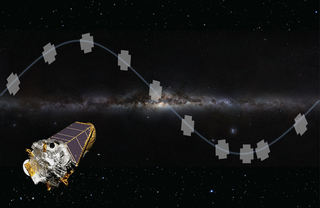
By Steve Howell and Knicole Colon
We are coming up on the 7th anniversary of the launch of the Kepler spacecraft and the 2nd year of operation of the K2 mission. K2 is unique in that it observes the Ecliptic (the Zodiac) in the sky in 80-day campaigns, durations that are limited by solar angle constraints. With this setup, K2 offers a wide variety of science return. You can find an overview of all K2 Campaign fields here: http://keplerscience.arc.nasa.gov/k2-fields.html.
Science unique to K2 includes a microlensing campaign, which will begin in early April 2016 and is a WFIRST-like observational program that involves tens of ground-based telescopes planning to provide simultaneous observations. You can find more information about the K2 Campaign 9 Microlensing experiment here: http://keplerscience.arc.nasa.gov/k2-c9.html.
In exoplanet science, K2 observes everything from O and B stars to late M stars, brown dwarfs, and even white dwarfs. This sample consists of bright stars allowing easy RV follow-up and nearby stars providing good platforms for high resolution imaging follow-up. Exoplanets being discovered by K2 are generally small (<4 Earth radii), with some orbiting in or near the Habitable Zone and with many able to have masses measured. In particular, the cool, rocky planets K2-18b and K2-3b will be two of the first JWST exoplanet targets for which atmospheric composition may be measured.
At the other end of the spectrum, K2 is providing cosmologists with information to unlock the secrets of supernova (SN) explosions. K2’s observations of thousands of galaxies are yielding many dozens of SN light curves, captured and well sampled in the first few hours to days. For Type II SN, this provides observations of the shock breakout and determinations of the collapsing star radius. K2 can also identify the progenitors of Type Ia SN, which to date, appear to be coalescing white dwarfs.
By Steve Howell, NASA Ames Research Center, Kepler and K2 Project Scientist
and Knicole Colon, NASA Ames Research Center, Kepler and K2 Guest Observer Office Research Scientist
